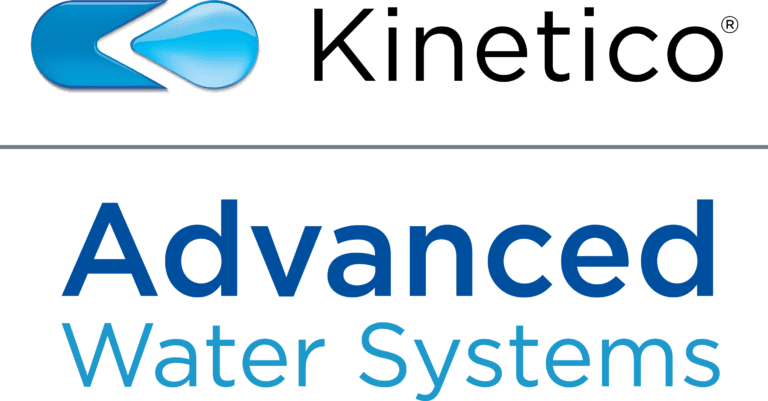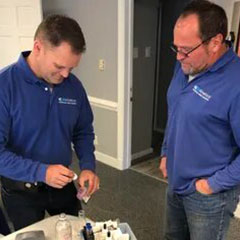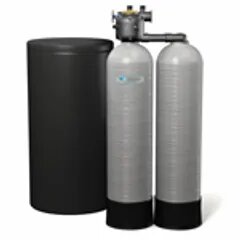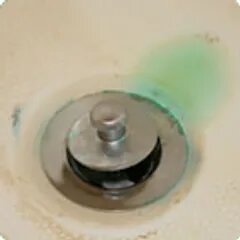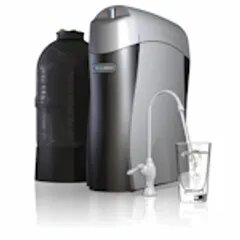Radon In Water
- Radon is the leading cause of lung cancer among non-smokers (Field, 2010)
- Radon is one of the leading environmental causes of cancer mortality in the US.
- The main pathway for radon into the body is by inhalation - leads to lung cancer
- Ingestion of radon thru drinking water is a minor pathway but can lead to stomach cancer
- Radon is responsible for 21,000 deaths per year, according to the EPA
- Radon is a water contaminant that exists as a gas, so you have high exposure in a shower or similar "gas chamber."
Silica In Water
- Silica is one of the most frustrating water problems out of all the water contaminants.
- It is easily seen at the water line in toilet bowls – very hard build-up that can only be removed with pumice stone or scraping
- On polished chrome surfaces like tub fixtures
- Obvious on black porcelain sinks and surfaces as hard white spots, “islands”, or spidery networks
- Silica domains on glass shower doors – “frosted look.”
- Dull, white silica build-up on granite counters
- Drinking water that has not been treated using reverse osmosis or De-ionizing resins still contains Silica and will destroy fridge dispensers with a permanent white "trickle."
PH (Acidic) Water
- pH refers to the "potential Hydrogen", and is on a 1 to 14 scale with 7 as the neutral point. As readings get lower than 7 the term "acidic" is appropriate, and readings above are "basic". Acidic water problems are common with Shallow wells and dissolve metals, causing leaks, blue-green stains, and copper and lead poisoning in drinking water if not treated.
- Soda ash injection is effective at raising pH without raising hardness.
- Calcite ("Georgia Marble") is an all-natural treatment and can be used in non-electric passive or filtration units or electric systems. Iron levels dictate which is best for each situation.
- Ozone can be effective depending on the levels of CO2 but requires space and venting.
Chlorine & Chloramines
Suppose municipal or Community sources service you. In that case, you will have Chlorine (and usually Ammonia) added to your water to keep your drinking water disinfected while it makes its journey to your house. Along the way, it encounters organic compounds, and the Chlorine reacts to form Trihalomethanes, which are carcinogens (and are a water problem regulated by the EPA). These water contaminants are gases and can be inhaled, absorbed, and ingested.
Manganese
Manganese is an "aesthetic" water contaminant in Virginia but has significant neurological health risks, with other states (NC) failing drinking water tests with excessive Manganese levels. This water problem sometimes shows as black in the toilet tanks and ruins the laundry. A twin-tank water softener and a professional-grade filter are ideal for the treatment of this metal.
Fluoride
Hexafluorosilicic acid or Hydrofluorosilic acid is the substance used to treat 90% of the fluoridated drinking water supplies across the US. The current MCL is 4.00 PPM, which is over 250 times higher than Lead but considered more toxic. The apparent benefits of Fluoride treatment on teeth are prevalent during the adolescent period when growth is happening. Once we are adults, it is not needed anymore to harden the crystalline structure and is merely another water contaminant to be address
Hard Water
"Hard Water" refers to dissolved calcium in the water, causing extra soaps to be needed to counter this water problem, wasted energy on water-heating, destruction of appliances due to deposits, dirty laundry from lack of proper rinsing, dry skin from clogged oil pores, premature aging of clothes, and scale deposits on dishes, shower doors, walls, cars, tubs, sinks, and anything else water touches and dries. This water contaminant is best treated with a twin-tank water softener for 24/7 reassurance.
Learn About Drinking Water
Drinking water is a topic that gains more attention every day. The reality is that water is continuously recycled and is not getting better naturally, and few people drink "from the tap" anymore. "Springwater" has no regulation aside from the source water must somewhere have a spring, and "protected source" simply means there is a fence around it. Estimates state that over 25% of Spring Water is just tap water. The best way to remove the water contaminants is by reverse osmosis.
Learn About Iron
Iron can exist in typically two forms, Ferric and/or Ferrous, and makes drinking water taste metallic and turn orange if exposed to air. Suppose you run your raw water into a white bucket, and it is clear but turns yellow/orange eventually. In that case, you have Ferrous iron. This water contaminant can be removed with a twin-tank water softener or other methods using oxidation and then filtration to catch the Ferric Iron. If you can see "C" it, then you have Ferric. Iron is a very common water problem in central VA, and Kinetico has solutions designed to fix it.
